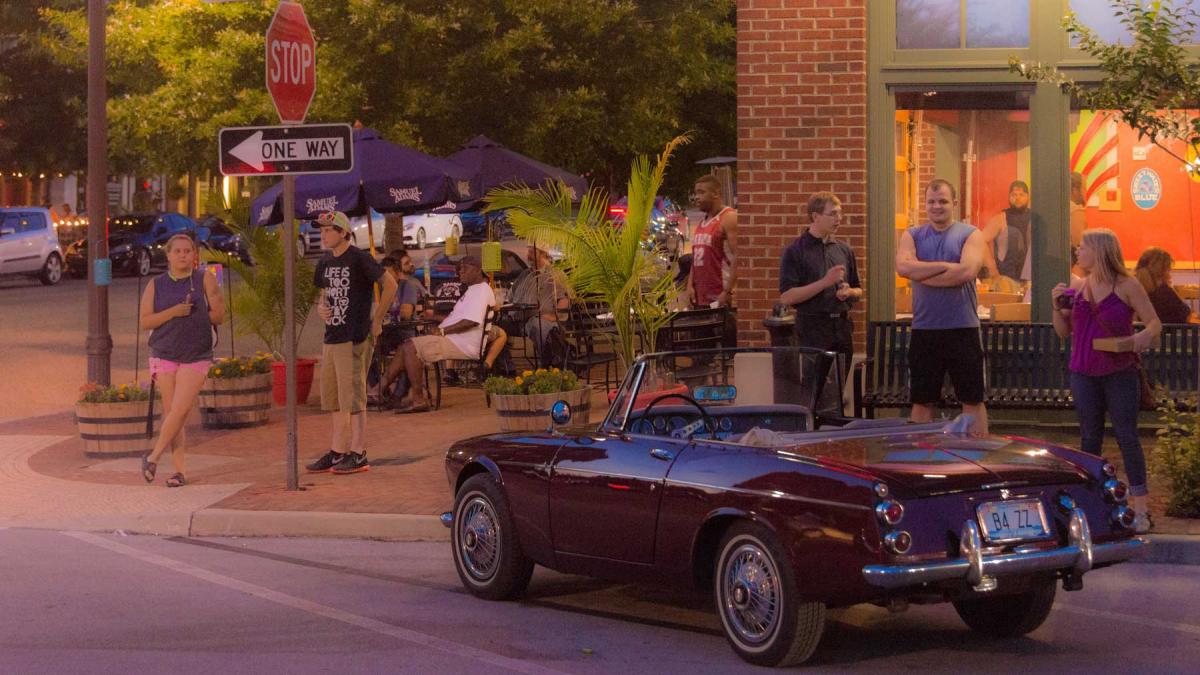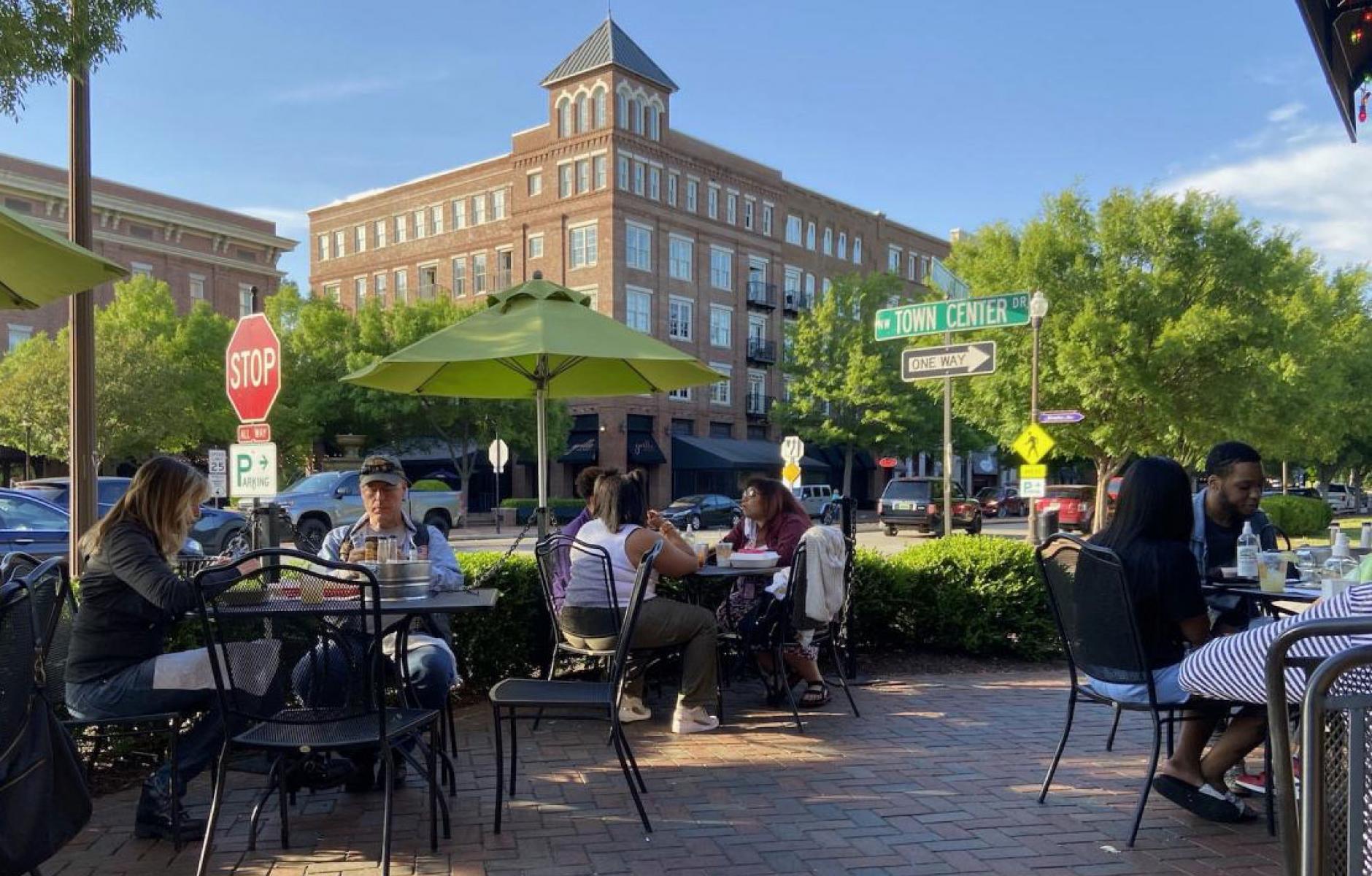
Lessons from a successful suburban center
I recently visited the Village of Providence in Huntsville, Alabama, for the Urban Guild Summit. Providence is a Charter Award-winning traditional neighborhood development (TND) designed in the early 2000s by DPZ CoDesign, and it is just a nice place to be.
While there for three days, I had no car, I never thought about leaving, and without trying, I averaged 12,000 steps a day—two and a half times my usual total.
The Village of Providence is a spectacular economic success. There was nothing on the site 20 years ago, four miles from downtown as the crow flies. Now, it may have the best urbanism in the region outside of downtown Huntsville.
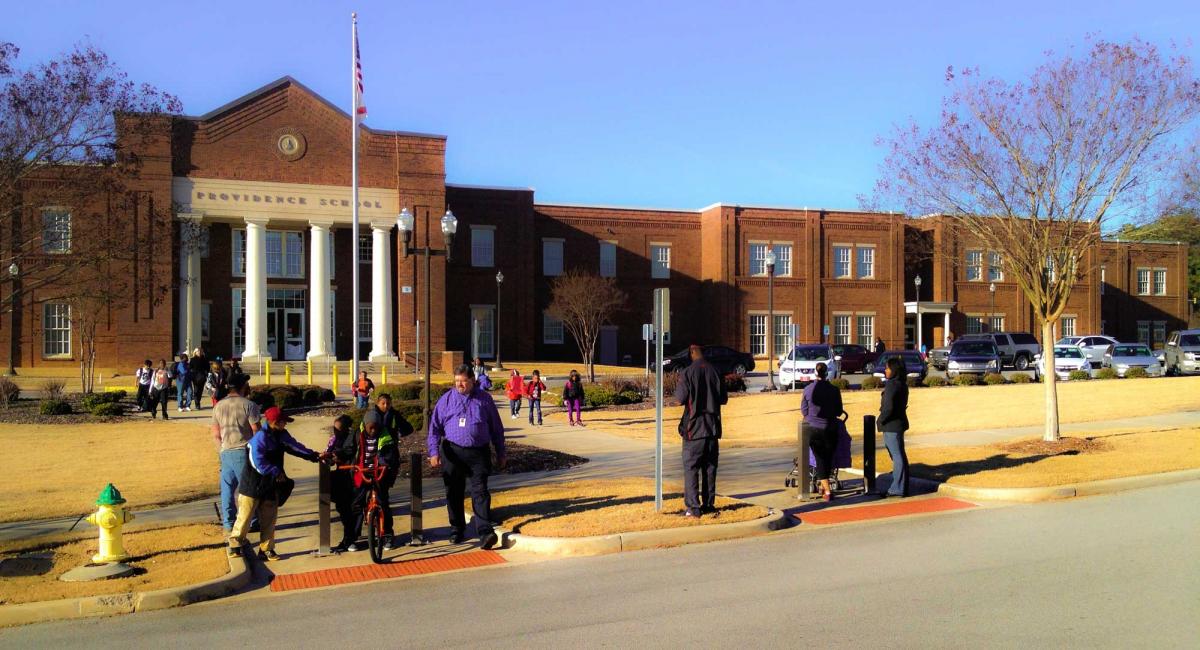
Representatives of the development report that there are at least 4,000 jobs in the Village of Providence, 1,000 multifamily living spaces, and three good-sized hotels. Traditional neighborhoods with 700 single-family houses and an elementary school are adjacent to the center. Within a mile radius are another 5,000 homes (not part of the TND), and some are within walking distance.
Unlike some new urban centers, the Village of Providence has good street life and foot traffic, even in off hours. There are lots of restaurants with outdoor seating, activating the sidewalks. In a city dominated by cars, Providence is notable for several reasons:
The village center is made up of mostly 5- to 7-story buildings. The contrast is striking with nearby single-family neighborhoods—this part of Huntsville has no other tall buildings. When Providence began, downtown Huntsville was mostly two stories tall. In recent years, more tall buildings have been built downtown—partly inspired by the Village of Providence, according to Steve Mouzon, the long-time TND’s town architect.
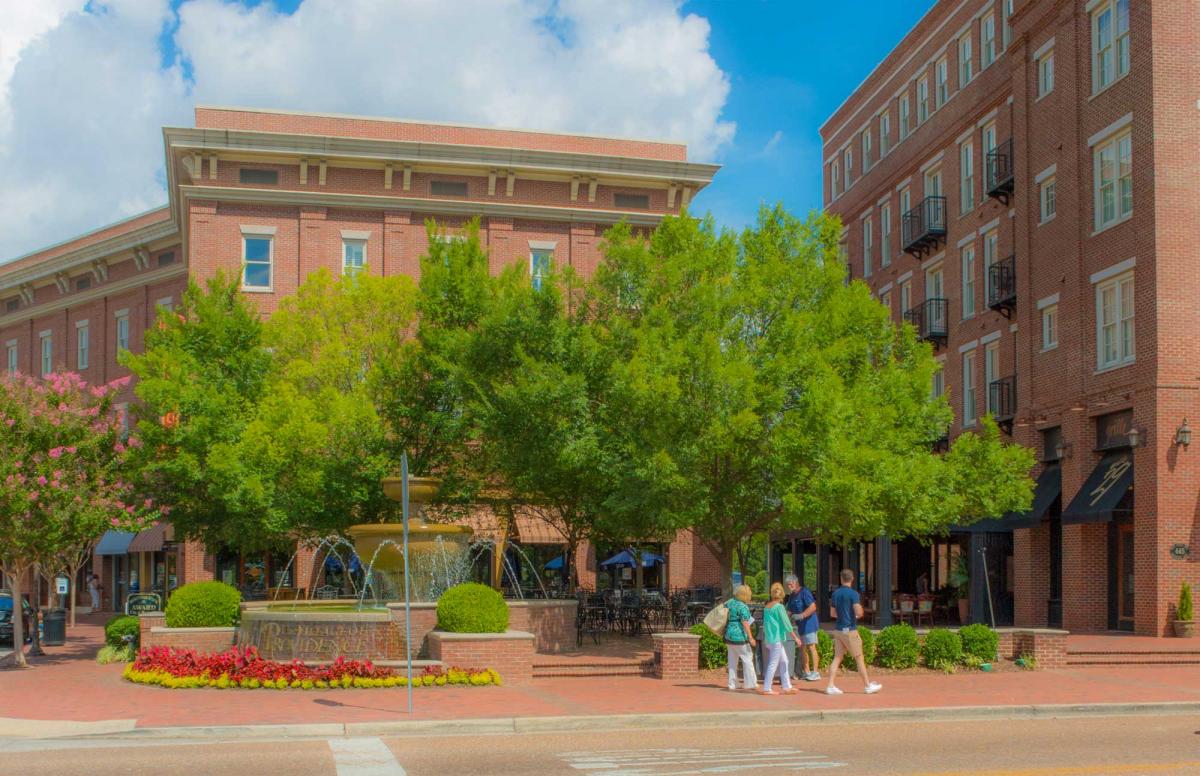
Because the frontages are done well, the buildings are engaging to pedestrians and don’t feel out of place. The architecture is not spectacular, but it is several cuts above typical new mixed-use and multifamily buildings in the US.
A five-lane suburban arterial road built for high-speed traffic was converted into a main street. This is astonishing and extremely rare. The road is not heavily traveled for its size, although it does get commuter traffic. Cars move slowly through the village, although the lack of any traffic lights means the delay is short.
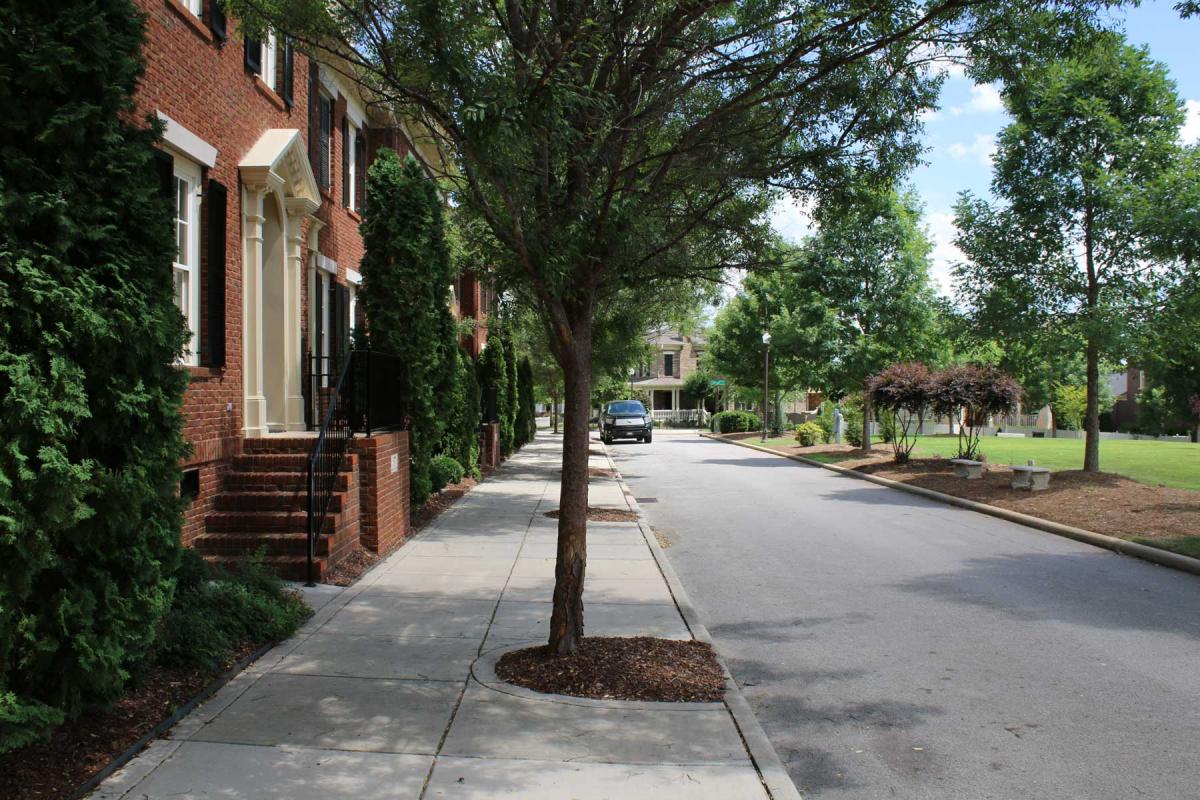
The developer was able to convert the outside lanes to on-street parking. After a lengthy battle, the middle lane was turned into a landscaped strip with short turn lanes at intersections. I was able to identify four factors that may contribute to the economic success of the Village of Providence:
- Huntsville is a rapidly growing city and region with a strong economy, which makes it easier to build a town with a strong job base.
- The choice to straddle an arterial road and turn that into a main street was bold but ultimately paid off. The village center is not just a destination but a place people drive through to get from A to B. That is similar to any old town, and it makes this new town feel more real. It also integrates the village into the regional economy more closely.
- As the developer told the group, they stuck with the plan. It would have been easy for the developer to compromise at any point, but they didn’t. The streets, in particular, are walkable throughout, which is harder than it looks. The residential neighborhood streets are narrow, “yield” streets. I’m sure there were battles with traffic engineers and fire marshals. I walked all over and never felt uncomfortable.
- They continually pursued architecture that is good but not fussy. The Village has three name-brand hotels, all of which were persuaded to go along with the design program. The result is a town center that will, over time, feel timeless.


